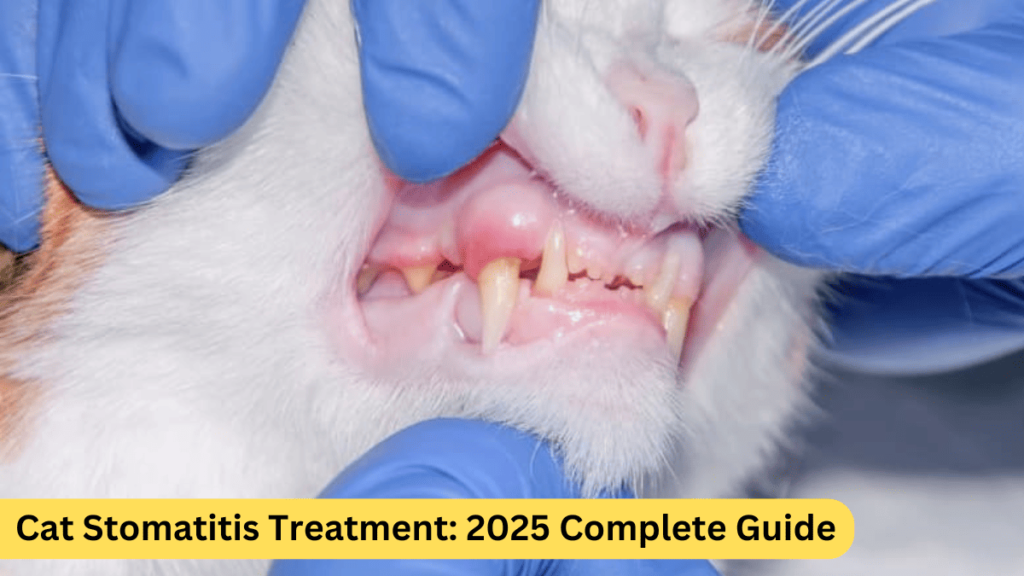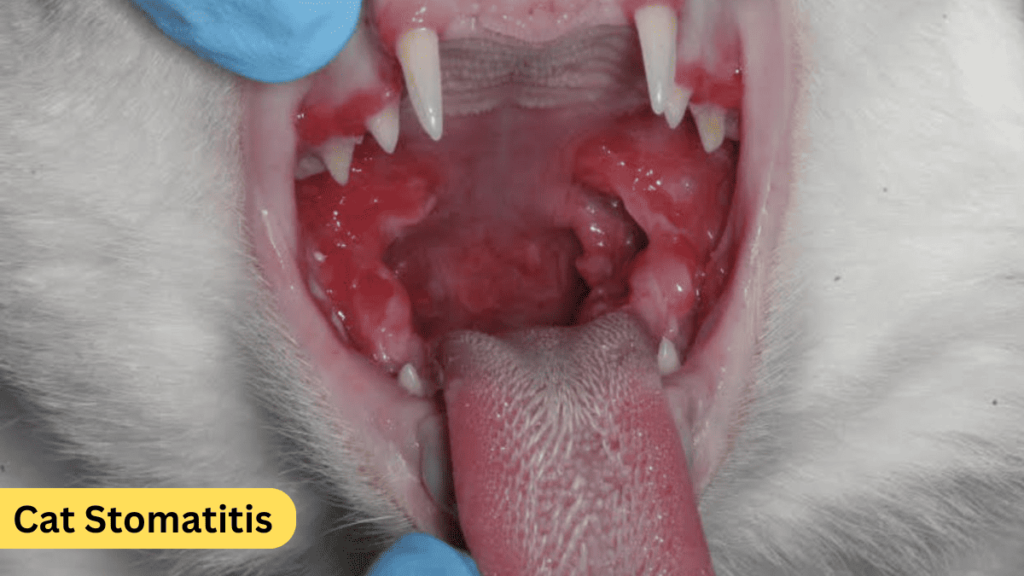
Cat stomatitis is a painful, chronic condition that affects a cat’s quality of life. This guide provides a comprehensive look at Cat Stomatitis Treatment, its symptoms, causes, and how to care for a cat suffering from this condition. We’ll address commonly asked questions, explore treatment options, and provide SEO-optimized information to help you make informed decisions.
Table of Contents
What is Cat Stomatitis?

Cat stomatitis is a severe inflammatory condition affecting the soft tissues of a cat’s mouth. It is also referred to as feline chronic gingivostomatitis (FCGS). This condition is characterized by ulcers and lesions in the gums, tongue, and other oral tissues.
Unlike gingivitis, which primarily affects the gumline, stomatitis can involve the entire mouth, leading to significant pain and discomfort for your pet.
Key Facts about Cat Stomatitis:
- Prevalence: Affects up to 10% of the cat population.
- Pain Level: Highly painful, leading to eating difficulties and behavioral changes.
- Diagnosis: Requires a thorough oral examination, blood tests, and sometimes biopsies.
Symptoms of Cat Stomatitis
The symptoms of stomatitis are often easy to identify because of the visible discomfort in your cat.
| Symptom | Description |
|---|---|
| Foul-smelling breath | Persistent bad breath due to bacterial overgrowth. |
| Excessive drooling | Cats may drool excessively, often mixed with blood. |
| Pain while eating | Cats may cry out or drop food while trying to eat. |
| Decreased appetite | Pain leads to reduced eating, causing weight loss. |
| Poor grooming | Cats avoid grooming due to oral discomfort, leading to matted fur. |
| Red or inflamed gums | Severe inflammation visible around teeth and mouth. |
| Behavioral changes | Irritability or withdrawal due to chronic pain. |
Causes of Cat Stomatitis
The exact cause of stomatitis is not well understood, but it is believed to result from an abnormal immune response to oral bacteria, viruses, or plaque.
Common Factors Associated with Stomatitis:
- Feline Immunodeficiency Virus (FIV) or Feline Leukemia Virus (FeLV)
- Dental plaque and tartar buildup
- Periodontal disease
- Hypersensitivity to oral bacteria
- Genetic predisposition
How is Stomatitis Diagnosed?
A veterinarian will perform a detailed oral examination to identify stomatitis. Additional diagnostic tools include:
- Blood Tests: To rule out systemic diseases like FIV or FeLV.
- Urine Tests: For kidney and liver function assessment.
- Dental X-rays: To evaluate the extent of oral damage.
- Biopsy: In cases where oral cancer or specific infections are suspected.
Treatment Options for Cat Stomatitis
1. Medical Treatments
Medical therapy aims to manage symptoms and reduce inflammation:
| Medication | Purpose | Challenges |
|---|---|---|
| Corticosteroids | Reduce inflammation and pain. | Long-term use can lead to side effects like diabetes. |
| Antibiotics | Treat secondary infections (e.g., metronidazole, clindamycin). | Limited effectiveness over time. |
| Immune-Modulators | Drugs like cyclosporine to suppress immune response. | Expensive and requires close monitoring. |
| Pain Relievers | NSAIDs or opioids for severe pain. | Temporary relief; does not address the root cause. |
2. Surgical Treatments
Surgical extraction of teeth is the most effective long-term solution for stomatitis.
| Type of Surgery | Description | Success Rate |
|---|---|---|
| Full-mouth Extraction | Removal of all teeth to eliminate plaque sources. | 90–95% success with long-term remission. |
| Partial Extraction | Removal of teeth behind canines. | ~60% success; less effective than full-mouth extraction. |
Post-Surgical Care
After surgery, your cat will need proper care to ensure recovery:
- Diet: Transition to soft foods for 2–3 weeks post-op.
- Medications: Pain relief and anti-inflammatory drugs.
- Appetite Stimulants: To encourage eating during recovery.
- Monitoring: Regular follow-ups to check for healing and residual inflammation.
Can Stomatitis Be Treated at Home?
While at-home treatments cannot cure stomatitis, they can help in managing symptoms:
- Oral Hygiene: Brush your cat’s teeth daily with cat-specific toothpaste.
- Dental Rinses: Use veterinarian-approved antiseptic oral rinses.
- Special Diets: Feed dental-specific diets like Hill’s® Science Diet Oral Care.
Read More:
Blood in Cat Urine Treatment: 2025 Guide
Preventing Stomatitis in Cats
Prevention is challenging due to the unclear causes, but maintaining excellent oral hygiene is key:
- Regular veterinary dental cleanings.
- Daily brushing of your cat’s teeth.
- Providing dental chews or special diets to reduce plaque buildup.
FAQs About Cat Stomatitis
Q: Is stomatitis in cats contagious?
A: In cases linked to viral infections like FeLV or FIV, stomatitis can be contagious.
Q: Is stomatitis fatal for cats?
A: If untreated, stomatitis can lead to severe pain, anorexia, and secondary conditions like hepatic lipidosis, which can be life-threatening.
Q: How much does stomatitis treatment cost?
A: Costs vary depending on the severity. Full-mouth extractions can range from $1,500 to $3,000.
Conclusion: Ensuring a Better Life for Your Cat
Cat stomatitis is a challenging condition, but with the right treatment and care, most cats can enjoy a pain-free life. Early diagnosis, routine dental hygiene, and, if necessary, surgical intervention are the keys to managing this condition.
By understanding the symptoms, causes, and treatment options, you can give your cat the best chance at recovery. For any concerns, consult your veterinarian promptly.
